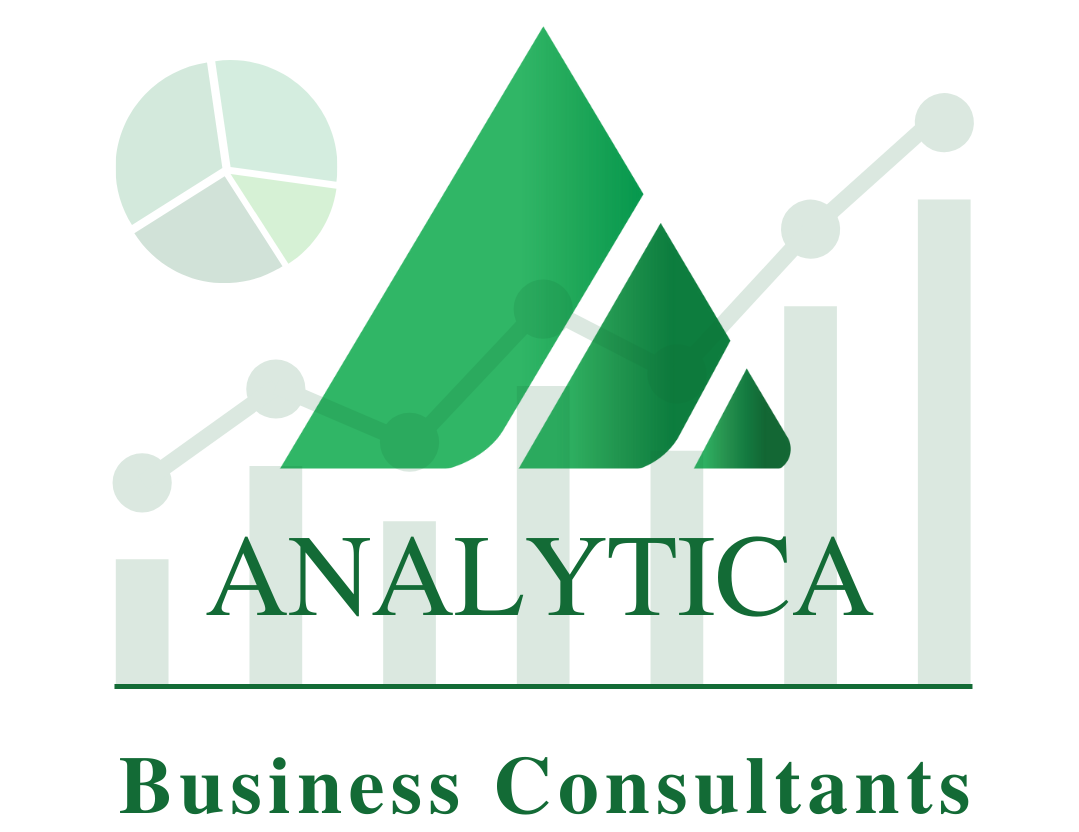- Home
- About us
- Services
- CFO Services
- Business Advisory Services
- Business Process Re-engineering – BPR
- Business Process Management – BPM
- Standard Operating Procedure - SOP
- Business Gap Analysis
- Mergers & Acquisitions Projections
- Feasibility Projections for Expansion Projects
- SOP Development & Implementation
- KPI Development with C-Level Monitoring
- Business Combinations
- Corporate Restructuring
- Business Planning Support
- Accounting & Bookkeeping Services
- HR & Payroll Services
- Employee Data base
- Attendance record Management
- Overtime & Quota Bonus payment
- Deduction, Promotion & Increments
- Bi-Annual & Annual Staff Evaluation
- KPI Development & Performance Review
- Compliance with relevant Labor Laws
- End of Service Benefits
- Job Description Portfolio (JD's)
- Training and Development
- Standard Forms & Formats Database
- Clients
- Blog
- Contact us
By
Raza
/
Cost Optimization

What is Cost Optimization?
The ongoing process of locating and eliminating the sources of wasteful spending, underutilization, or poor return is known as cost optimization. While reinvesting in new technology to boost company growth or increase margins, the practice aims to lower costs. Cost optimization aims to coordinate service delivery with the best client experience at the appropriate cost level.
Cost optimization is completely utilizing all resources, getting a result at the lowest price point, and meeting your functional requirements. To optimize savings and returns, AWS continues, “Cost optimization continuously refines and improves a workload over its lifecycle.”
The cost optimization pillar of the AWS Well-Architected Framework entails creating and running cost-aware workloads to achieve business outcomes while lowering costs and enabling your organization to optimize its return on investment. Cost optimization entails finding methods to cut back on wasteful spending and boost operational effectiveness.
What is Cloud Cost Optimization then?
Cloud cost optimization, which includes lowering cloud waste while enabling optimal cloud operations at any scale, is a strategy for businesses with cloud-based workloads. To minimize cloud expenses and increase company value, cost optimization in the cloud combines strategies, techniques, best practices, and tools.
In the cloud, cost optimization involves:
- locating and cutting excess or poorly handled resources
- using discounts to get more resources for less money and right-sizing computing resources to fit particular workloads and application needs to cut down on cloud waste.
Why Is Cost Optimization Important Now?
Cost management and waste reduction are two advantages of cost optimization, which apply to both data centers and the cloud. Cost optimization is a great way to build a flexible, contemporary infrastructure that can accommodate your workload requirements without going over budget.
Cost Optimization Pillars
In almost all environments, five cost optimization pillars hold regardless of your task or architecture. Cost optimization’s foundational elements are:
- Right size – Make sure your provisions are in line with your needs. For instance, you might plan for CPU, memory, storage, and network speed when computing.
- Increase elasticity – Traditional IT expenses and hardware needs are geared toward peak utilization and are infrequently turned off. When using the cloud, you can turn resources off when not in use and optimize expenses to meet changing demands. For instance, you can typically disable non-production servers for at least 70% each week.
- Leverage the right pricing model – We offer numerous payment structures. (Reserved instances for predictable tasks and on-demand and spot instances for variable workloads). Depending on the nature of your workload, select the appropriate pricing model to reduce expenses.
- Optimize storage – Analytica Consultants offers various storage levels at performance-based prices.
- Measure, watch, and make improvements – To ensure that you take full advantage of our Cloud’s economic potential at any size, you should:
- Create and implement expense allocation tags.
- Define metrics, establish goals, and evaluate them frequently.
- Enable teams to design for the expense by providing them with training, a way to see their progress, and a good mix of incentives.
- Assign someone or a squad the duty of optimization.

What are Some Cost Optimization Examples?
The use of different cost optimization methods does not impact the performance or engineering speed of your system. Several tactics consist of:
Modernize
Legacy systems frequently use a lot of processing capacity. Using a public server is one possibility. Since the cloud service provider takes care of those details, cloud computing enables you to instantly lower hardware and software licensing costs while enhancing the performance of your system.
Cloud-native design
Legacy systems frequently use a lot of processing capacity. Using a public server is one possibility. Since the cloud service provider takes care of those details, cloud computing enables you to instantly lower hardware and software licensing costs while enhancing the performance of your system.
Rightsizing
This entails investigating and scaling computing resources to the most effective scale appropriate for a specific use case. You can improve the efficiency of the RAM, database, vCPU, graphics, storage, and network throughout. To maximize performance and costs, autonomous rightsizing tools like ProsperOps can also recommend adjustments across instance types.
Utilize cloud provider discounts
To help clients get more business value for less money, cloud providers give a variety of discount programs. For instance, we provide Reserved Instances and Savings Plans. You can get standard On-Demand pricing for up to 75% less in both situations. Your job is easy by using an automation tool like ProsperOps, which finds the best discounting program for your workload, rightsizes your resources, and buys the appropriate instances.
Take advantage of Spot Instances
You can constantly switch your system from an expensive On-Demand model to the less expensive Spot Instances whenever they are available by using a tool like Xosphere.
End unused resources
You can turn off idle instances without impacting user experience by monitoring server load measurements to determine when activity is at its lowest. If your organization does not operate during those hours, another way to go about it is to terminate compute instances when you are gone, such as on weekends or at night.
Enabling cost anomaly detection
You can use platforms like CloudZero to spot unusual expenses in real-time before they balloon into expensive surprises. Without such a system, many companies receive unexpected cloud bills at the end of the billing cycle, frequently weeks after they happen.
Develop a cost-conscious culture
This long-term approach intends to assist professionals in engineering, finance, and management in handling costs as the first-class metric it is, alongside uptime and the Mean Time To Recover (MTTR). Making cost a deliberate decision allows you to progressively inspire your teams to find innovative ways to cut costs without sacrificing performance.
The 8 Best Practices For Cost Optimization You Must Use Right Away
Utilize these best practices for cost optimization to increase company value without adding to costs.
IT and business processes should be more digital to enable automated cost optimization.
For all business purchases, get the finest rates and conditions. You can automate the coordination of Spot Instances and the optimization of RIs and Savings Plans with tools like ProsperOps and Xosphere.
To increase cloud expense visibility, enable continuous cost monitoring. In this manner, you can identify exactly where to make cost reductions without affecting system performance or customer satisfaction.
Use these recommendations for cloud cost tracking to spot and address cost anomalies as soon as they occur. You can prevent overspending as a result.
Identify the areas where your company is squandering cloud resources.
Establish and implement cost governance policies that tell your team when to terminate workloads or mark instances as idle. By doing so, you can prevent instances from starting up needlessly.
To prevent wasteful over- or under-provisioning of AWS cloud services (degrading performance or service availability).
Examine your use cases to see if these untapped AWS cost-saving possibilities apply.

You May Also Like

Role Of Chief Financial Officer (CFO)
The term Chief Financial Officer (CFO) is a senior executive responsible for managing the financial operations of a company. The CFO’s duties include tracking cash flow and financial planning as well as analyzing the company’s financial strengths and...

Business Combination
A business combination is a type of transaction in which two businesses merge to expand their size by using the acquisition of the other company and the subsequent control of its operations and workforce. It is the merging of two or more companies to accomplish a single objective by eradicating competition.

Investment Dashboard
The investment dashboard is an integrated panel for tracking, reconsidering, and scaling the performance of investments of the organization. This panel allows the monitoring of investment records following fixed and variable incomes. The process is administrated by an organization’s...

Working Capital Management
Working capital management is a business strategy planned to ensure the best utilization of a business’s current assets and liabilities for the company’s effective operation and to maintain sufficient cash flow to meet future short-term goals. Working capital management refers to the set of activities that make...
